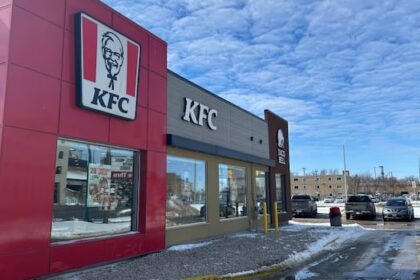Canadians expect food prices to keep rising, but they’re less pessimistic than they were a year ago about how much costs will go up. Photo by 123RFArticle contentCanadians expect food prices to keep rising, but they’re less pessimistic than they were a year ago about how much costs will go up. THIS CONTENT IS RESERVED FOR SUBSCRIBERS ONLY.Subscribe now to access this story and more:Unlimited access to the website and appExclusive access to premium content, newsletters and podcastsFull access to the e-Edition app, an electronic replica of the print edition that you can share, download and comment onEnjoy insights and behind-the-scenes analysis from our award-winning journalistsSupport local journalists and the next generation of journalistsSUBSCRIBE TO UNLOCK MORE ARTICLES.Subscribe or sign in to your account to continue your reading experience.Unlimited access to the website and appExclusive access to premium content, newsletters and podcastsFull access to the e-Edition app, an electronic replica of the print edition that you can share, download and comment onEnjoy insights and behind-the-scenes analysis from our award-winning journalistsSupport local journalists and the next generation of journalistsRegister to unlock more articles.Create an account or sign in to continue your reading experience.Access additional stories every monthShare your thoughts and join the conversation in our commenting communityGet email updates from your favourite authorsSign In or Create an AccountorArticle contentThat’s one of the results of a biannual survey of Canadians’ perceptions around food issues released Thursday. Article contentArticle contentPrepared by Dalhousie University’s Agri-food Analytics Lab, the results show Canadians expect food prices to keep rising, but fewer people are expecting extreme increases compared to those who felt that way in the spring. Most now foresee moderate inflation between two and seven per cent, which the report said indicates cautious optimism that food costs may stabilize somewhat next year. Article contentArticle contentThe number of people who expected prices to go up by more than 10 per cent dropped from 28.5 per cent of respondents in the spring to 18.5 per cent this fall, consistent with the national average but far below the 37.1 per cent of Newfoundlanders who felt that way. Nova Scotia was also the most optimistic of the four Atlantic provinces. Article contentCanadians continue to look for ways to reduce their grocery spending, the survey showed, with 48 per cent seeking out sales and discounts. Coupons, online price comparisons and shopping at cheaper stores were also common, although there were slight declines in all except coupon use, which were reported being used seven percentage points less than in the spring. Article contentLooking for sales and buying fewer non-essential foods were reported by at least one in five Canadians. Article contentOverall, spending on groceries kept rising, with 20 per cent of Canadians shelling out more than $600 a month on food. That number is up slightly from spring.Article contentArticle contentSpending between $300 and $500 was the most common amount reported. Article contentThe report says that highlights “how persistent food inflation is gradually pushing more households into higher spending brackets. However, since the food price index has increased, we can assume that consumers can’t buy the same value of items with their current spending.” Article contentThe report also found that spending on dining out or takeout remains modest, with around one-third of Canadians spending less than $50 a month and nearly a quarter spending between $51 and $100, which the report said “suggests most households continue to limit restaurant spending amid ongoing price pressures.” Article contentIf there was a positive trend, it was that the number of people using savings or borrowing money to buy food dropped from the fall of 2024 in all provinces except New Brunswick. Article content“Nevertheless, it remains alarmingly high across provinces,” the report said. “Alberta, Saskatchewan and Manitoba continue to show the highest levels of financial strain, while Quebec, New Brunswick and Nova Scotia report the lowest, suggesting regional differences in affordability and household resilience.”
People less pessimistic about food-related issues, latest Dalhousie University survey shows












